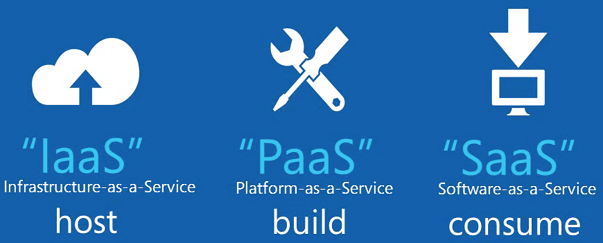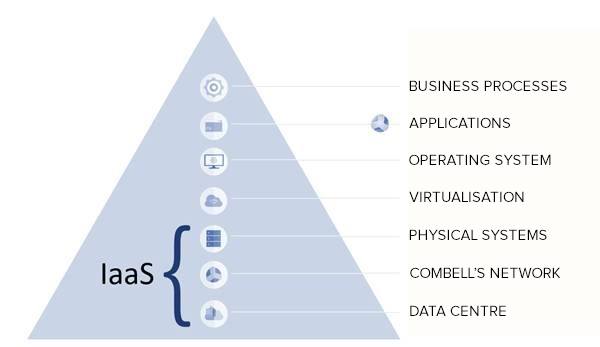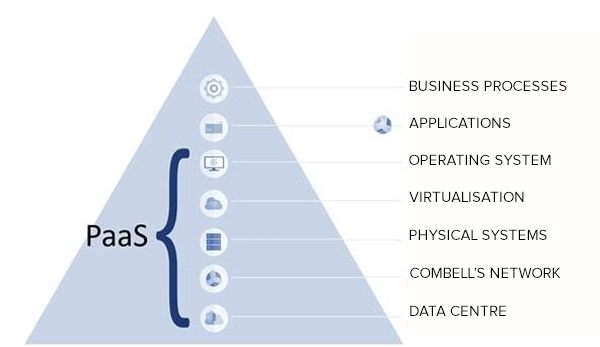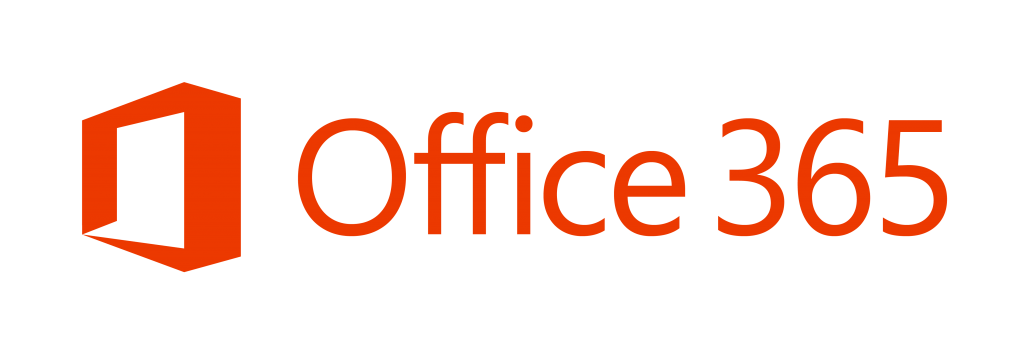IaaS, PaaS, SaaS or BaaS? It’s up to you!

 On his LinkedIn profile, our colleague Tim wrote an article about the most frequently asked questions about the cloud. In this article, he explores all the 'as a service' models:
On his LinkedIn profile, our colleague Tim wrote an article about the most frequently asked questions about the cloud. In this article, he explores all the 'as a service' models:
People who work in the IT sector usually have this unfortunate habit that, to be honest, I myself sometimes have too: in a professional conversation, we like to use tons of IT terms that are commonplace to techies, but many end users often get very confused by this profusion of computers, servers, etc.
In this digital era, how on earth can they find out which choice in the IT area will be beneficial to their business, when all the terms they come across in this context are nothing but a jumbled mess of acronyms, which even when written in full are still mumbo jumbo to them?
In the Cloud sector, for instance, you will see a wide variety of acronyms that do have a specific meaning, but clearly deserve a word of explanation. IaaS, PaaS, Saas, BaaS… they are all part of the Cloud family, but have some fundamental differences.

As-a-Service
The first thing that strikes you is that each one of these terms ends with “aaS”, which stands for “as a Service”. This implies that, as a customer, you can expect a certain level of service.
The key difference is in the extent of this service, but also in the budget you (or your company) need to allocate, yourself or via a business partner, in order to come to an efficient solution to your IT problem. This problem may be the simple need for an e-mail solution, but you may also want to make telecommuting easier or no longer want to manage an environment on your own.
IaaS (Infrastructure as a Service)
If your organisation has its own environment, but for whatever reason, you do not want to provide the physical layer (servers, data centre, environmental control, power supply, server room) yourself, then we are talking about IaaS. With Infrastructure as a service, you keep taking care (partly or fully) of management and are responsible for the implementation of the applicative side of your environment.

The service provider that provides you with the IaaS platform offers you uptime guarantees, in most cases via a service level agreement (SLA). This document sets out the nature of the service you can expect from your provider.
Moreover, you do not need to worry about replacing or adding hard disks, renewing hardware, configuring servers, etc. IaaS is usually regarded as an “unmanaged” environment, because the service provider ensures the availability of the equipment but provides no managed services in addition to the hardware.
PaaS (Platform as a Service)
With PaaS, the service provider will take on more responsibilities. Not only will it provide the IaaS layer, but it will also provide the operating system (Windows, Linux), as well as possible middleware (e.g. IIS, .NET, Apache, MySQL...) and backup services in a service model. Database servers, web servers, domain controllers (for user management within Windows domains) and other components are prepared professionally, configured in accordance with the best practices and kept up to date. Constant support is also provided to ensure smooth operation.

A PaaS configuration is e.g. very useful if you are a (web) developer, because it allows you to have an environment at your disposal in no time for you to develop, test & deploy. This configuration is usually also a perfect solution for SMEs that run their own traditional client/server applications (ERP, accounting software, etc.).
SaaS (Software as a Service)
The most commonly used form of Cloud is SaaS, which consists in providing a comprehensive software package in the Cloud. SaaS is a software-based solution that usually meets the needs of end users, who no longer need to worry about any form of technical knowledge and get a complete software package that make their daily tasks easier or at least helps perform these tasks.

The provider is responsible for the operation of the product and includes IaaS, PaaS and the development and provision of an application in the Cloud.
Common examples are:
 Microsoft 365 (Office 365), which as you all know, includes Word, Excel, PowerPoint, etc.
Microsoft 365 (Office 365), which as you all know, includes Word, Excel, PowerPoint, etc.- A CRM system such as Teamleader
- Docusign, that allows you to sign documents electronically
- Slack, designed to share information at work
We at Combell are usually a IaaS or PaaS provider and help you develop your SaaS solution. Please check out the following customer cases, which may give you an idea of what you can find on our platforms:
- ScriptBook predicts if a Hollywood screenplay is going to be a hit
- Quality Guard monitors cooling and other systems for bakeries, butcher’s shops or restaurants in order to ensure food safety
- Sportslink was born as a thesis: an online platform where people can find the sports club that best suits them.
The possibilities are endless and are actually only limited by your creativity. Who knows, maybe you will find the next brilliant concept to provide via SaaS!
Hey, and what about BaaS?
This one is not really an official model, but some providers (like Combell) offer Backup as a service! If you want to impress your colleagues next time you talk about the Cloud with them, you should definitely check out Wikipedia’s “aaS” page!
And if you have any burning questions or comments, please let me know. Let’s talk and we’ll find the perfect solution… aaS usual! ;-) #badpuns #sorrynotsorry


